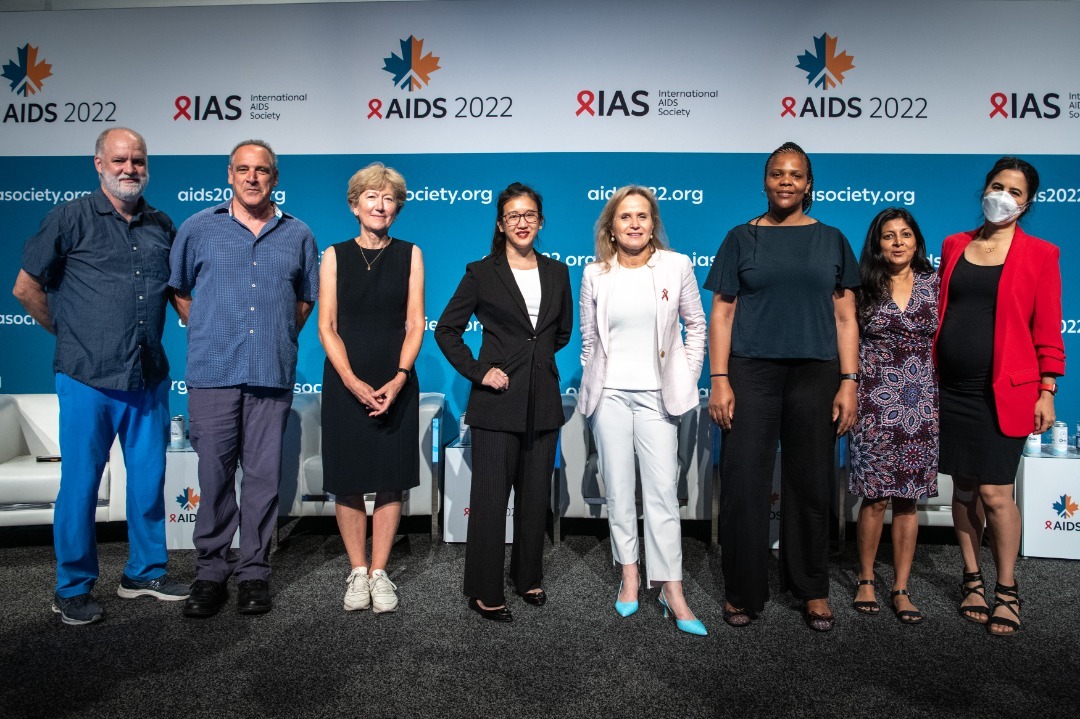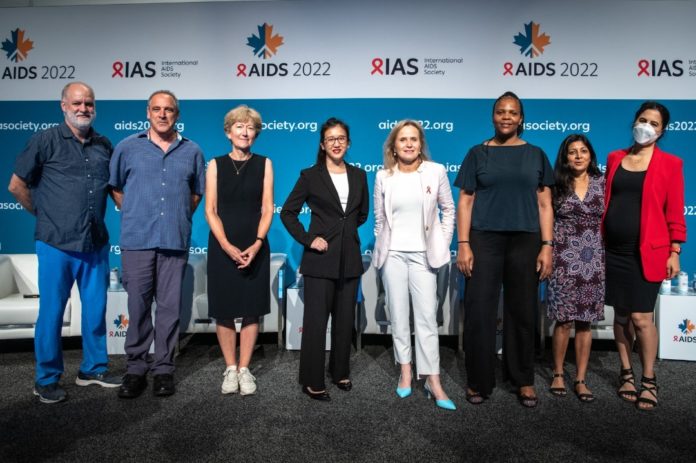
MONTREAL, August 2 – A roundtable on HIV media coverage revealed the different challenges between Asian, and Western and African countries in reporting on the HIV/AIDS pandemic that has spanned four decades.
While top health and science journalists from the United States, the United Kingdom, and South Africa highlighted decreasing press coverage of HIV/AIDS as the once-deadly disease is now perceived as a chronic condition due to wide access to treatment in those countries, CodeBlue pointed out that patient stories are still uncommon in Malaysia due to rife stigma and discrimination.
“In Malaysia, the problem is still largely stigma and discrimination, not just from the general public, but also from legislators and sometimes even among health care professionals themselves,” CodeBlue editor-in-chief Boo Su-Lyn told the “Future of HIV media coverage” media roundtable at the 24th International AIDS Conference (AIDS 2022) here Saturday.
Boo, who was the only representative from Asia at the media roundtable, related how the community of a rural woman from a minority group – who recently died from AIDS without her family knowing that she had the condition – did not want Boo to publicly name even the state that the deceased came from.
“We need more stories out there, but on the other hand, we also do need people who are brave enough to share those stories because that’s how we start with,” Boo said.
“When it’s hard for people to share their stories, then the ability of the media to push for better policy and better advocacy from not just civil society, but from the government and health care providers to work together, is blunted.
“So, in Malaysia, at least, the first step for people to share their stories – we’re still trying to get there when it comes to HIV/AIDS.”
Science Magazine senior correspondent Jon Cohen – who is based in San Diego, the United States, and has covered every international AIDS conference since 1989 – said AIDS journalism used to be really vibrant.
“AIDS journalism, when I began doing this at the international AIDS conferences, was a newsroom filled with hundreds of journalists – all the major television stations, radio stations, print, magazines. The newsroom today is kind of empty.”
Sarah Boseley, former health editor of The Guardian, said when she covered the Durban AIDS conference in South Africa more than two decades ago in 2000, AIDS in the UK then wasn’t “that massive an issue because there was a sense that, you know, people in the UK were no longer suffering in the same way.”
“What is the problem now with covering HIV is the success of the movement to get treatment for people. We have treatment, we have testing,” she told the panel.
“It wasn’t every newspaper anyway that took up this issue in the UK or in Europe, I think, but even those that did are now not doing as much as they used to do and that’s because there’s a sense that perhaps it is all sorted or ought to be sorted, and maybe it’s just down to bureaucrats – I don’t quite know what they think – the reasons why people haven’t got the treatment that they need.”
South Africa’s HIV Success Story Leads To Declining Public Interest
Canada’s The Globe and Mail health reporter and columnist André Picard, who moderated the panel discussion, noted that South Africa has been the epicentre of the HIV/AIDS pandemic since the beginning, but now boasts the largest antiretroviral therapy (ART) programme in the world.
Sipokazi Fokazi, a long-standing health reporter at the Sunday Times and TimesLIVE in South Africa, said in the past 15 years, South Africa moved from AIDS journalism to having the biggest HIV treatment programme, with more than seven million people on treatment.
“Today, we are a successful nation in terms of our treatments. We have more people on treatment. Women are able to protect themselves from HIV infection because they have access to PrEP (pre-exposure prophylaxis),” Fokazi told the panel.
According to the US’ Centers for Disease Control and Prevention (CDC), PrEP, a medicine that prevents HIV infection, reduces the risk of getting HIV from sex and from injection drug use by about 99 per cent and at least 74 per cent respectively.
“Men have access to medical male circumcision. About 80 per cent of the population of those who live with HIV and are on treatment are now undetectable and cannot transmit the virus,” Fokazi added.
“So we have a success story there, but I think the challenge has been – because we have been so successful, like Cohen pointed out – people have lost interest in HIV. Nobody wants to talk about it. There’s this fatigue among journalists and the community.”
Malaysia has not met the global AIDS target of achieving 95 per cent of those living with HIV to know their status, 95 per cent of those who know their status to be on treatment, and 95 per cent of those on treatment to be virally suppressed – meaning the amount of HIV in their body is kept very low by antiretroviral drugs so that they are not infectious to others – or 95-95-95.
According to the Ministry of Health’s Global AIDS Monitoring 2021 Progress Report, by the end of 2020, Malaysia only achieved 87-58-85.
Disturbingly, the UNAIDS Global AIDS Update 2022 report titled “In Danger” revealed that Malaysia is one of 38 countries that has seen increasing HIV infections since 2015.
The report cited Malaysia as being among the countries with rising HIV epidemics among “key populations”, defined by UNAIDS as gay men and other men who have sex with men, sex workers, transgender people, people who inject drugs, and prisoners and other incarcerated people as the five main key population groups that are particularly vulnerable to HIV and frequently lack adequate access to services.
On a global scale, the UNAIDS report sounded an alarm about stalled progress against HIV/AIDS during the last two years of the Covid-19 pandemic, as 1.5 million new HIV infections were recorded last year, three times the global target. New infections also rose in 2021 in Asia and the Pacific, reversing a previous decline over the past decade in the world’s most populous region.
Bigger Science Stories Needed Now
New York Times science and global health reporter Apoorva Mandavilli, who is based in New York City in America, said coverage of HIV/AIDS science is now focused on the next “big thing”, as demands of the newsroom make it difficult to cover incremental developments.
She said people have asked her to cover access issues related to expensive long-acting injectable HIV prevention drugs, such as patents.
“We will write about that, but what’s changed is that whereas before, you could cover sort of every aspect of the progression, now you can maybe have time for one story that puts it all together and delivers it. There’s just not enough time to do every step of the process,” Mandavilli told the panel.
“There is some good news in HIV, but you needed to have a news element to it. It has to be something different from what we’ve already known; it has to be a technology that blows your mind. For example, we’ve had all those failed attempts to replicate what the bone marrow transplants achieved.
“But let’s say one of those did succeed and I know there are lots of efforts trying to do that, that would be a huge deal because now we’ve gone from just these one-offs from Timothy Ray Brown or the London patient and the two or three others that have been to now we’re talking about maybe a cure that’s accessible to lots of people, and that would be a big thing.
“So it just has to be a much bigger story for us to be able to have time to do it.”
Brown, or the “Berlin” patient”, was the first case of HIV remission from a stem cell transplant reported in 2009. He was submitted to a bone marrow stem cell transplant and experienced HIV remission for 12 years. He died of recurrent leukaemia in September 2020.
At AIDS 2022 last Wednesday, researchers announced that a fourth patient with HIV, dubbed the “City of Hope” patient, appears to have been cured after receiving a stem cell transplant more than three years ago.
The 66-year-old man went into HIV remission – meaning the virus is suppressed for a period of time by the immune system without the need for antiretrovirals – and has been off of antiretroviral treatment for HIV for 17 months.
Link HIV To Other Viruses
Roxanne Khamsi – who is a former editor of Nature USA based in Canada and currently an independent science journalist who writes for Nature, The Atlantic, and WIRED – said the Covid-19 pandemic has improved science literacy among the general public, noting that her family members who are not scientists talk about T-cells and antibodies.
“I would say that one thing that has really struck me is if it’s possible to draw connections between HIV and other viruses within the stories that we write,” Khamsi told the media roundtable.
She related how a feature she wrote for WIRED about a year and half ago about Covid antibody therapies involved interviews with HIV researchers who had been developing antibody therapies for decades.
“So I think that if we as journalists can talk to sources and have them help us draw those connections between HIV and other viruses, it kind of brings a more holistic view, I think, of biology to the stories that we write,” Khamsi said.
She also said that the HIV virus taught people many things that they didn’t know.
“I guess in some ways, Covid is doing the same thing. There’s so much humility that these viruses tell humankind, and also as journalists, we can’t actually approach sources, thinking that we have all the questions that we need to ask them.”







